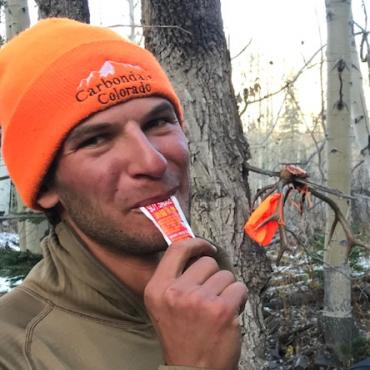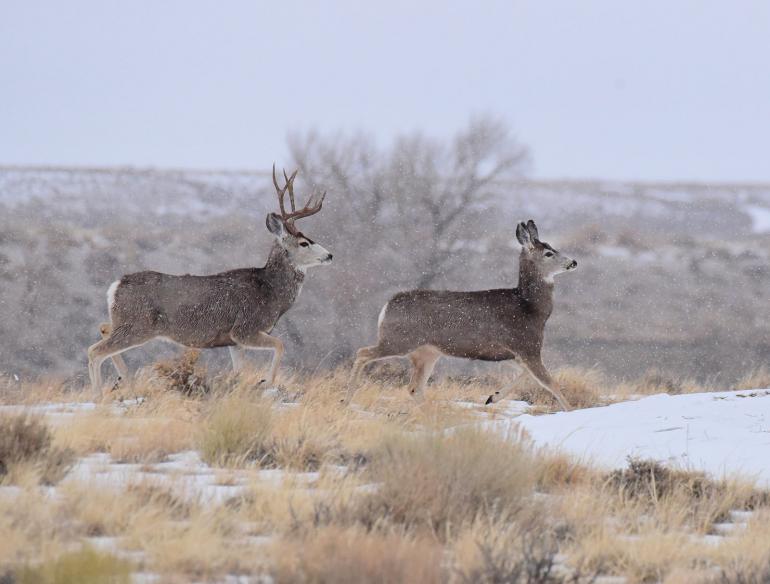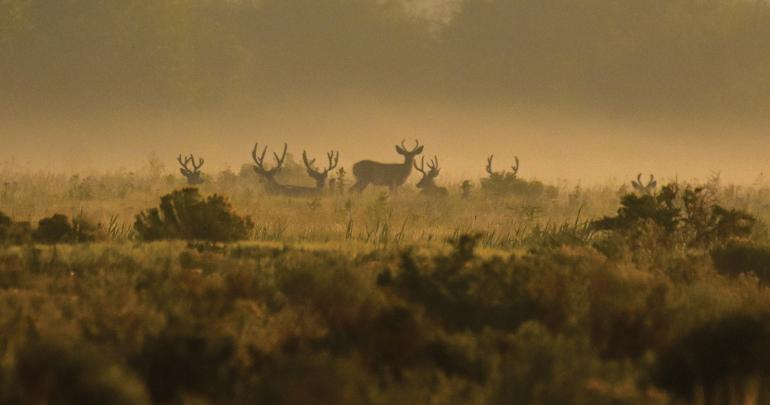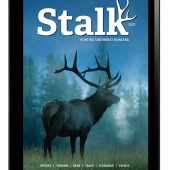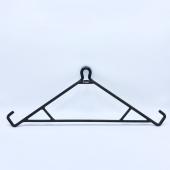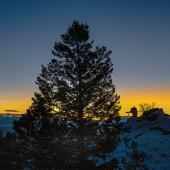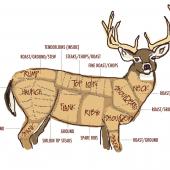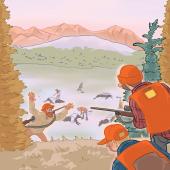All Bucked Up
Chasing Montana mule deer.
If you’re ever in need of a campfire conversation-starter, “first deer” stories are a guaranteed crowd-pleaser. Most are disastrous tales, traumatizing at the time. But in retrospect, they’re learning experiences, and funny anecdotes down the road. Case in point: I shot my first “muley” just off the 9th hole at the Cody, Wyoming golf course in a damage hunt. Somehow in the process I sat on a cactus, got an infection on my butt, and needed antibiotics to cure my rash weeks later. My brother shot his first deer that same day, and sent the poor thing flying off a cliff with a gut shot. We crawled back to his basement apartment that night, shaken, bloody head-to-toe, and exhausted.
I’ve come a long way since then, and now dedicate weeks each fall (and summer, as you’ll soon learn why) to the pursuit of mule deer. In Montana, mulies inhabit darn near every inch of country, from the peaks and meadows of the Madison Range to the coulees and clay draws of the Missouri Breaks. But finding big ’uns takes significant time and effort, or some good old-fashioned blind luck. If the former sounds more promising, then read on. This is a distillation of muley habitat, behavior, and hunting tactics applicable broadly to Montana.
Habitat
Mulies live everywhere from alpine basins to Bozeman back yards; anywhere there’s appropriate food, water, and shelter, really. Water is particularly important, especially during bow season. Spend some time scouting to find natural springs that will pump out water in even the driest years. Stake them out, or hunt in nearby timber that deer might be using for cover. Water is less of a concern during rifle season, as snow or late-season rain often bring ephemeral creeks back to life. Identify areas that still have good, green forage—shrubs, herbs, and wild berries. Often, these spots will be high in the mountains or in sheltered enclaves that were protected from the scorching summer heat. Use topographic maps and satellite imagery to piece together all three components, and then put boots on the ground.
Behavior
Mule deer have distinct summer and winter ranges, with their summer habitation being high in the mountains, and their colder-weather residence in the lower-elevation foothills or plains. The transition between the two typically takes place in late November, well after large elk herds have already made a break for lower country.
The best time to locate deer, however, is mid- to late summer, when mulies are out and about feeding in lush alpine basins. Common hunting wisdom is that bucks are killed in the summer—put in the miles scouting and locating bucks in July and August, and come fall, all that’s left to do is pull the trigger. If your scouting pays off and you lay eyes on a nice buck, chances are good he’ll remain in the same basin until snow or hunting pressure pushes him out. Look at topographic maps and satellite imagery to winnow in on likely areas.
The hardest month of the year to find bucks is October, when they drop into thick, dark timber, or secluded pockets pre-rut. The best tactic this time of year is to sit and glass from a vantage point with binoculars or, ideally, a spotting scope. Diehard mule-deer hunters spend days glassing, hoping to uncover bucks they first turned up on summer scouting trips. We could all learn a thing or two about patience and determination from these folks.
Gear
Don’t leave home without the essentials—good hiking boots, a pack, a knife, and a first-aid kit. Since so much of mule-deer hunting is glassing, a cheap tripod and decent spotting scope will also pay off in spades.
Your daypack won’t need much during bow season, just some water and a few snacks. But during rifle season, a couple extra layers are essential. Deer hunting often requires spending hours at first and last light glassing from a ridge or mountaintop when deer are most active—and those can be some pretty darn cold mornings come late November. The combination of a wool or fleece midlayer, down puffy jacket, and fuzzy neck gaiter is tough to beat. Don’t overlook boot gaiters, either, especially if there’s any kind of snow or muck.
Bow vs. Rifle
Bowhunting mule deer is notoriously difficult. They’re in their summer range still—high in the mountains—so it’s all spot-and-stalk. And they can’t be called in like elk, so stealth and well-executed stalks are critical. Rifle hunting is much easier, and a good way to start if you’re a beginner. In terms of rifle calibers, thousands of articles have been devoted to the topic, and the general consensus remains the same year after year: just about anything from .243 up to .300 Win. Mag. will do the trick. Consider using copper ammo as well. It’s becoming increasingly more available and has nearly identical ballistics and terminal killing power as lead, without the harmful health effects for hunters, their families, and wild scavengers alike.
Pack-Out
If there are several ways to skin a cat, then there are hundreds of ways to skin a deer. When it comes to the pack-out, if you can think it, somebody’s done it: dragged behind an ATV, towed with a bike, slung over a shoulder, pushed down a mountain in a sled... the list goes on. If you’re close to your vehicle, gut the thing and drag it out whole. If the animal’s a long way from the truck, quarter it and haul the pieces in a backpack. A doe can generally be done in one load; a big buck, in two. Regardless, make a plan ahead of time for getting your meat out of the field efficiently and in good condition.
Rut
While there’s wiggle room in terms of the exact timing, the muley rut takes place in the second half of November and is the most popular time to target the species. Once bucks are cued in on hot does, there’s little you can do to spook them. The bucks become oblivious to all else, and if you generally get your wind right, stalking in on a rutting mule deer can be quite a thrill, not to mention dead easy. It’s also easier to find bucks during the rut because they’re paired up with gaggles of does. Find the ladies, and the bucks won’t be far behind. The only caveat is that rutted-out muley bucks tend to taste gamey—plan on marinating those hind steaks, lest you alienate your dinner-party guests from mule-deer meat forever.
Regs
Montana hunters have a five-week general archery season and a five-week general rifle season to shoot a mule-deer buck. Lots of units also allow hunters to put their general tag on a doe, and there’s no shame in doing so. Consult the FWP regulations for exact seasons and dates.


